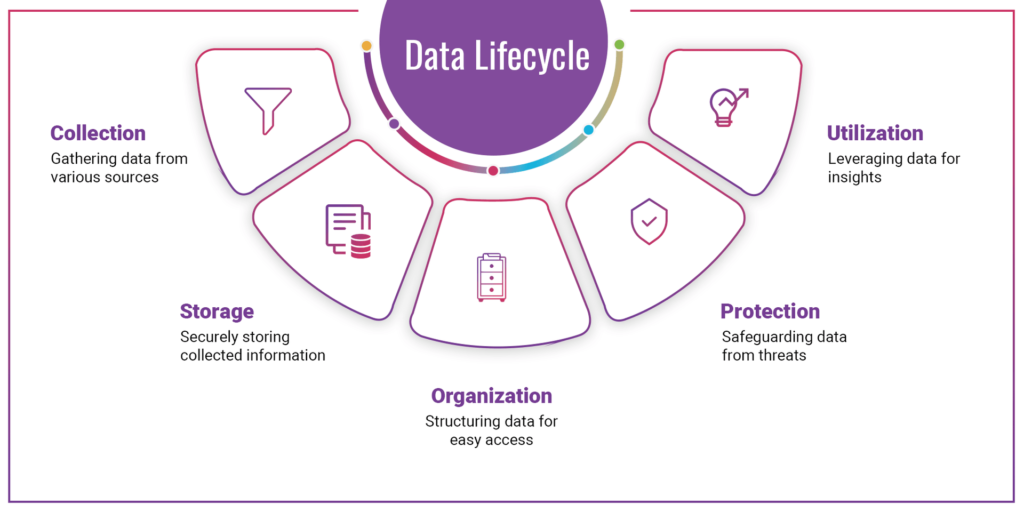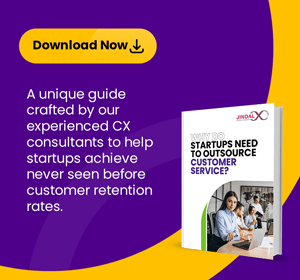
Ever wondered how some organizations exactly know what their customers want, even before they do? The secret lies in smart data management.
Today, when everyone is going digital, data is the new gold, which can either make or break customer experiences. In such a scenario, businesses must know how to manage this rich resource smartly.
This is when the question arises—what exactly is Smart Data Management, and why is it extremely vital?
Keep reading the blog to get answers to these questions and explore top strategies to ensure excellent customer experience with smart data management.
Understanding Data Management!
Data management is the bedrock of current business processes and functions. For the uninitiated, it essentially is the act of collecting, storing, organizing, protecting, and efficiently using data.
Think of this as some sort of high-end digital filing system; it’s alive and constantly changing.
If we look at the present data-driven business landscape, we can certainly say that data management has become a necessity than a routine operation. From empowering businesses in making informed decisions to helping a company provide a personalized customer experience, smart data management can get businesses ahead of the game.
5 Ways Data Management is Important in Delivering Exceptional Customer Experience (CX)
Now that you know what is data management, it is time to understand its importance in providing excellent customer experience (CX):
360-Degree Customer View
Smart data management provides a 360-degree view of customers from all directions.
Simply put, smart data management help combine information across all customer touchpoints, including website interactions, purchase history, customer service calls, and social media engagement, to form a comprehensive record on each customer for any given business. This complete picture will help drive more accurate decision-making and pave the way for personalized engagement across all phases of customer life.
Real-Time Responsiveness
Effective management can help the company to process information in real-time and analyze it. This ability ensures that a business responds instantly to the needs of customers, or to any changes in the market.
Say for instance, while a customer is browsing through a certain product on the portal, the e-commerce site can offer him/her recommendations of other products dynamically, or a bank can detect fraudulent transactions and stop them as they occur, enhancing customer experience and security.
Predictive Customer Service
To understand customer problems before they even happen, businesses can use historical data and advanced analytics. The proactive approach shifts customer service from reactive to preventive.
For example, a telecommunications organization can promptly track patterns that indicate a potential problem on their network and fix it before the customer is affected by it. This in turn can efficiently cut down on complaints and enhance satisfaction.
Hyper-Personalization at Scale
Smart data management can deliver the hyper-personalization of customer experiences, even when dealing with millions of customers.
By examining heaps of data, organizations can create micro-segments and, therefore, customize all their services and communication for individual customers.
This was previously impossible at scale but attainable now through efficient data management and AI-driven analytics.
Continuous Experience Optimization
A robust data management system builds a cycle of continuous improvement of customer experiences for businesses.
One will be able to identify areas of improvement and test new strategies by collecting and analyzing customer feedback data, interaction data, and performance metrics. These data-driven strategies would ensure the customer experience is not static but is continuously changing and improving based on actual behavior and choices of customers.

6 Strategies for Smart Data Management to Deliver Exceptional Customer Experience
Here are six effective strategies for smart data management to offer excellent customer service:
Implement a centralized customer data platform (CDP)
A CDP unifies different sources of data to create one comprehensive customer view. It is the strategy by which data silos can be broken down, and one cohesive profile can be created about the customer.
A CDP allows companies to easily access customer data to analyze all customer touchpoints, leading to better decisions and increased personalization in the customer experience.
Needless to say, with such a system in place, data can be kept consistent both within different departments and across them.
Ensure data quality and accuracy
Only high-quality and accurate data can help deliver exceptional customer experiences.
Implement processes for data validation, frequently clean the data, and apply deduplication techniques to ensure the integrity of the data.
The organization can establish certain data governance policies that would ensure consistency in the entry and management of data.
Regular audits and checking of data quality would help in the identification and rectification of such issues before they have a negative impact, thus ensuring that decisions and customer interactions are based upon correct information.
Leverage artificial intelligence and machine learning
AI (Artificial Intelligence) and ML technologies process a large amount of data fast enough and bring out insights which otherwise would have missed if done through human analysis.
Both AI and ML-based tools predict customer behavior in terms of their journeys, automate personalization, and optimize customer journeys in real-time.
For instance, chatbots using AI can offer instant customer support 24/7. On the other hand, ML algorithms suggest products based on the individual taste and preference of customers—not to mention their browser history.
Prioritize data security and privacy
Data security has become even more important today. The reason is none other than increasing awareness about data privacy and regulations such as GDPR and CCPA. This typically increases the need to implement robust security measures such as encryption, access controls, and execution of security audits at frequent intervals.
Also, share with customers how your brand collects and uses personal data, making things more transparent and reliable. Prioritizing data security not just ensures compliance but also can build trust among customers.
Develop a data-driven culture within the organization
Drive a culture where data finds space in every tier of decision-making. Organize department-wide data literacy training that will enable all staff to know how to read data and effectively use it. Remember that when everyone in your organization values and understands data, it drives more coherent and customer-centric strategies and operations.
Continuously analyze and act on customer feedback
Implement processes and systems that help you listen, understand, and act on customer feedback on a regular basis. This includes surveys, monitoring of social media, and review of customer service interactions. Use these to further identify improvement areas of product/service in the overall customer experience. Closing the loop on customer feedback means showing them how their input helped drive change, proving your regard for their opinions, ensuring loyalty, and improving customer satisfaction.
Improve your coversion rates by 63% for an eCommerce business
5 Future Trends in Data Management for Customer Experience
The top five future trends in data management for customer experience that you must be aware of are as follows:
Increase in Multimodality
Multimodality refers to the use of multiple types of data and interaction methods. This trend, if applied in the domain of customer experience, could mean that business enterprises are increasingly going to use various forms of data and multiple channels to interact with customers and collect data. This would present a much better view of the behavior of the customer and their preferences across different contexts.
Reliability on AGI and Related Research
AGI stands for Artificial General Intelligence, which means highly autonomous systems that far exceed human performance in the most economically valuable work. This trend means that more firms will consider advanced AI systems that have the processing power to understand and respond to complex customer needs more effectively than narrow AI.
Reformed Workforce
This trend simply means that skill sets, and role demands in the workforce are changing. The more integral data management and AI become to customer experience, the greater demand for data scientists, AI specialists, and employees who can work alongside AI systems will follow. It also means existing roles may need to be “reformed” or refitted to stay relevant with new technologies.
Increase Use of Artificial Intelligence
It is no news that Artificial Intelligence is taking over all the industries by storm. It is predicted that AI including advanced chatbots, predictive analytics for customer behavior and AI-driven personalization will be massively used to manage customer experience in the coming times.
Stress on Security, Privacy, and Governance
The more businesses collect and use customer data, the greater the focus on protection and ethical usage will become in time to come.
This trend incorporates much stricter regulations in terms of data protection, more sophisticated measures of cybersecurity in place, and much clearer data governance policies in operation.
This also includes transparency towards customers about how their data is used and empowering them with greater control over their personal information.
Bottom Line
Smart data management today, in a world of data, has evolved from being just a luxury and become a need for delivering great customer experiences.
Looking into the future, emergent trends like multimodality, AGI, and reformed workforces will continue to shift the ways we manage and harness our data.
Key to success is embracing all the current trends we discussed in this blog while ensuring a steadfast commitment to data security and privacy. By doing so, you can create personalized, seamless experiences that not only meet but exceed customer expectations, setting the stage for long-term success in an increasingly competitive marketplace.










